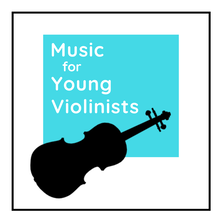|
After spending decades teaching and hours every day watching how the body's posture impacts the instrument's sound, I can not stress enough that the body is the first instrument. One of the most common problems is too much activation in the shoulders. Learn 3 innovative ways to train and teach the release of muscles in the shoulders in this blog post below. When we play the violin, both shoulders tend to tighten up and cause negative issues in our playing. Here are 3 tips to help violinists gain awareness in their shoulders and keep their violin playing healthy. 1- PRACTICE LAYING DOWN This is silly and awkward BUT highly effective. The laws of gravity will help a violinist feel a naturally aligned state in their body when they play laying down. Laying down while playing the violin is an incredible tool for the following three techniques: 1-Teaching the neck to release tension. 2- Supporting the shoulders in finding the base of their sockets. 3- Getting the knees to soften up. Young children love this because it feels like a novelty, however, this practice technique is appropriate for players of all ages and levels. Laying down while playing the violin will create a very unnatural feeling in the bow arm and compromise the sound, but the long-term results of alignment and awareness are more than worth the short-term compromises. 2- TIGHTEN UP: Go to the extreme to build awareness. Tighten up the shoulders as much as possible for 5 seconds and release. I use this verbal cue: "put your shoulders in your ears." After this intense use of muscles, the shoulders will respond with fatigue and rest by staying down in the bottom of their sockets. They may not always stay down for the rest of the lesson or practice session, but this exercise helps develop the necessary awareness to address tight shoulders and fix this problem in violin playing. In addition to creating muscle fatigue and natural inclination to release, this tip will also help a violinist realize the extreme of their range of motion so that they have more control in choosing where their shoulders go when playing. 3- EVALUATE THE CHIN REST AND SHOULDER PAD SET-UP: When was the last time you changed your *chin rest or shoulder pad? Young students with growing bodies have different proportions in their neck-shoulder-arms approximately every six months and, their playing needs are also growing. Chin rests and shoulder pads need to be re-evaluated for younger players on a regular basis because of this continual physical and musical growth. Most of us do not live in a major metropolitan area with a large string supply store to experiment with a variety of gear for our violins. Instead of this, stay up to date and informed of the variety of chin rests and shoulder pads by subscribing to string catalogs (links below). Also, consider the Poly-Pad which I have featured on the “Things I Love” page. This economical shoulder sponge has extra curves than competitors pads and is one of my favorites. When I moved to Oregon 15 years ago I purchased a Poly-Pad in each size and it really helped me individually fit all of my students. Interested in more tips for playing the violin? Below are 3 M4YV tutorial videos on vibrato, pizzicato and bow hold "bunny flips" that share ideas to help you bring out the best in your music making!
How do you help your student keep their shoulders relaxed when they play the violin?
0 Comments
Are Too Many Toys Bad for Kids? According to the article "Too Many Toys are Bad for Children," written in 2017 by Sarah Knapton, science editor of The Telegraph, the average child in Briton has 328 toys but only plays with 12 of them. This statistic reveals that kids use less than 4% of their toys and suggests that we are not wisely investing in our children. Furthermore, research done at the University of Toledo confirms that too many toys for kids can damage their potential and lead to decreased focus and less imagination. I have many remarkable young people in my life and have given cheap disposable gifts. It's hard not to because I love gifting, and we live far away, so spending time together (especially in a pandemic) is difficult. However, when I really think about my values, this is not aligned with building focus, encouraging imagination, nurturing inherent gifts, and fostering meaningful relationships. There are many ways we can invest in children to encourage higher levels of development and foster our values. When I was a toddler, one of my relatives purchased stock in his company for me. Twenty years later, when I was ready to play on a high-quality violin, this investment had continuously grown in value over the years and was waiting for me to be used on something that has now been used and appreciated almost daily for over two decades. Had my relative used that money on a toy, I would have no recollection of the toy today, no resources to purchase a fine instrument and pursue my violin performance degrees, and nothing to pass along to the next generation in my family. As I search for a way to close the gap between my values and actions with the gifts I give to the children in my life, I wanted to share these thoughts to confirm what many of you already know - fewer toys are better for children. I hope this spurs a conversation on using our resources to best support the amazing young people in our lives. Below is a short list of ways to do this: 1- Tickets to live performances.
2- Pay for a month of their violin tuition, or sponsor a youth to attend a summer music institute. 3- Buy a new violin case (or music stand, shoulder rest, etc. There are some super creative rosins available for reasonable prices and will make great gifts). 4- Make a practicing counter (click HERE to learn more). 5- Purchase toys that can be used for generations (like wood blocks). Thank you to Robbie from www.GreatViolinCases.com for sharing his expertise on this guest blog post! Learn more about these cases by clicking on the links below. Thanks to technology, violin cases have been getting more and more advanced over the past few years. That means they're becoming more protective, durable, lightweight, and temperature-resistant. And the great thing is, you don't have to break the bank to get a decent case! Many reputable brands are on a mission to make protective cases more affordable for students. Below is a list of the top 5 violin cases for students based on their unique features. 1 - Best Value:Gewa Pure Violin Cases - starting at $220. These German cases are as protective as many $600 cases out there! They're made of polycarbonate, which is also used to make shatterproof glass. Plus, the case is more scratch-resistant than many hardshell violin cases. This is a great case for students that plan on playing the violin for at least 4 years. The neck cushion is adjustable so that it can fit ¾ and 4/4 violins. It's an affordable option for parents since you don't need to buy a new case when your child switches from a ¾ size to full-size violin. 2 - Best For Multi-Talented Students:Jakob Winter Violin Cases - starting at $182. Are you a student involved with lots of activities, and your violin goes along with you for all of these? Then you need a backpack case that is light and easy to transport. The Jakob Winter violin cases weigh as little as 2.8 lbs. That's as light as it gets! And they all come with 2 backpack straps, so you have the choice of wearing it like a backpack or over one shoulder (while you carry your school backpack). 3 - Best For Showing Up To Every Lesson Organized:Bobelock 1061 Fiberglass Violin Cases - starting at $260. Are you a student that needs a case that can help you keep all your materials (music, shoulder pad, tuner, accessories) in one place? Or else you'd forget them? Then check out the Bobelock 1061 fiberglass violin cases. These cases have all the features you need to stay organized. They come with covers that have zippered sheet music compartments. There's a velcro strap under the neck of the violin for your shoulder rest. And the spacious accessories pouch is movable! So you can keep all your cleaning supplies, rosin, and accessories in one place and take it with you to your stand. 4 - Best For Your Personalized Style (And Why This Matters):Tonareli Violin Cases - starting at $229. According to developmental psychologist Eric Erickson, students aged 12-18 need to establish a sense of identity before successfully moving into adulthood. This is also the age most students quit. Having a case that reflects their developing sense of self can help anchor their identity as a musician and support them in playing the violin. The Tonareli violin cases have the most colors and styles of any brand! They're also the ones who pioneered the cute "cello-shaped" violin cases. Plus, you can easily put on any stickers you like to these cases' smooth fiberglass surface. 5 - Best For Electric Violins:Gewa Bio Violin Cases - starting at $144. Electric violins have been growing in popularity in recent years, especially among students. That's because they're great with technology! Nowadays, any kid with an iPhone can plug in his electric violin, make music on Garageband, share it on Instagram immediately with all his friends and followers, and probably make a music video at the same time… all on his iPhone. Electric violins give students a way of "plugging" their instruments into the digital world. And they need a good case to make sure their electric violin is well protected. The Gewa Bio case is a great case for electric violins because the interior is wide. Allowing it to accommodate electric violins of various widths and designs. + BONUS - The Most Durable Cases:Bam Hightech Violin Cases - starting at $568.
Have you already invested in an expensive instrument and need a case to keep it safe? The Bam Hightech is the most durable case and will protect your asset for a lifetime. Some students have already purchased their life long instruments and are ready to invest in a case worthy of their beloved instruments. The Bam Hightech cases are incredibly durable. They're stronger than carbon fiber cases, but they do not absorb heat like carbon fiber cases do. They're definitely not the cheapest cases. But if you're serious about protecting your violin, you'll want a Bam Hightech case. Use stick-on jewels on the fine tuners to help make violin playing fun and personalized for young students. This idea for making violin fun comes from one of my 5-year-old students who brought in some stick-on jewels one lesson. While I have a strict rule for no stickers on the face of the violin, I thought to add these to the fine tuners would not damage the instrument and they helped a young musician make her music-making a little more personalized and festive. You can purchase these on Amazon by searching for stick-on jewels and also at many stores in the scrapbooking and craft sections. For more ideas on how to make violin fun for young musicians, please visit the Violin Hacks & Bow Hold Helpers page and download some free PDF's on the FREEBIES page.
Play along to the 10 easiest violin songs here on this youtube video:I spent the past 20 years teaching the violin and most of that was using a Suzuki Violin curriculum which begins with Twinkle, Twinkle Little Star & rhythmic variations. In my opinion, this is is a difficult piece to begin with since it has 4 sections in A-B-B-A form and uses 6 pitches. I always had to break it down into smaller songs like the Flower Song and Monkey Song in order to teach it to young beginners.
This got me thinking about how I might teach beginners if I were to use a different curriculum so I created the list below and a violin sheet music collection of what I think are the 10 easiest violin songs. 3 Note Songs:
4 Note Song:
5 Note Songs:
6 Note Songs:
Lastly, for clarification, there is a slight error in calling this a list of songs because the definition of a "song" is a piece of music meant to be sung with the human voice versus a "piece" which is composed for an instrument. As you can see from this list above, Spring from the Four Seasons is technically a "piece" and not a "song". What songs/pieces would you include in this list? Please let us know in the comments below. Thanks! Warm holiday wishes to you and your family!
If you are inspired to play some traditional holiday songs & Christmas music on your violin you will love the printable sheet music collection called HOLIDAY JOY! You can download the entire collection from the convenience of your cozy home and immediately start to play on your violin. The title says it all, it's a joyful set of music and is a cultivation of my years of arranging pieces for my studio's annual outreach performance. Want to encourage your students to practice over their holiday break? Why not send them this link and/or purchase a copy of this for them. See the entire collection HERE and purchase HERE. (in the Keys of A, D & G Major)
I have a young student who plays with a passionate and focused tone and is very devoted in her practicing. She is progressing beautifully but after many years of lessons she still struggles to execute down and up bows correctly. Doing review pieces to fix this issue is counter-productive since she has ingrained incorrect bowing patterns into her old repertoire. Doing the same scale 20x/day would help but does not create a compelling assignment and she would likely zone out and resume playing incorrect bowings.
In an attempt to help her master down and up bows, I created the 7 Bowing Studies for Beginning Level Violin in the Keys of A,D & G Major. Since the focus of these studies is bowing they are kept to one octave and done 3 times in keys with parallel finger patterns (A, D & G Major) for ample repetition of the bow strokes and to keep the left hand as simple as possible. These exercises can be used in two ways: 1- Individually to help with a specific technique needed in repertoire. 2- As a series for students who need more support organizing their down and up bows. Features of this resource include:
Head on over to the FREEBIES page here on Music for Young Violinists to download these sweet coloring pages that playfully illustrate a duet, trio and quartet. Coloring sheets are fantastic for keeping in your studio and at group classes for your youngest musicians when they need a break.
The FREEBIES page is always rotating in new material so please check back often. This collection of music was so much fun to write and I am so happy to be able to share it with more musicians thru the Music for Young Violinists project. I have a special place in my heart to compose for beginning level violinists. I created these pieces for my studio so that each of my youngest students could have a special solo feature when we had our group recital performance of Boil Them Cabbage Down. Creating solos for specific musicians helped me customize parts that supported different techniques that would be beneficial to individual musicians. These techniques include using harmonics to loosen the left hand/arm with shifting and helping identify the middle of the string, sixteenth note rhythms to build tone and composing material in the familiar key of A Major to build confidence and success with newly developed reading skills. I hope you enjoy this joyful collection of music! Please let me know what your favorite solos are. HOW TO USE THIS BOOK - 1- Assign individual solos to specific students for a group performance to showcase individual musicians. 2- As a reading book - the variations help build on existing skills and aural templates while teaching the musician slight changes in the music notation. 3- Special assignment for any student who has an affinity for fiddle music. 4- Special assignment for summer/winter breaks because the consistency of material allows for independent learning. 5- Note reading practice by writing in the pitch above the note (one of the many perks for printing out your own music is that you can write in it and still have access to a new, fresh part). 6- Fiddle party or workshop material. 7- For FUN!!! Play music in the true sense of the word “play.” Tell a friend, email the studio, post to Facebook/Pinterest or if you are like me, send a good old fashioned letter in the mail: the Spring/Summer 2016 Music for Young Violinists music packet is still available for FREE. Just fill out a contact form either on the HOME PAGE or on the FREEBIES page and bam - you will receive a link that allows you to download this packet of music teaching awesomeness.
Wow - that's pretty awesome right! I will only offer these music packets as free seasonal downloads for 3 more seasons so don't delay in spreading the good news. All good things in life must come to an end and when I begin nursing school I will have to end this neat global music sharing project. Thanks! Heather Thank you to TakeLessons.com for including me in this neat infographic.
Did you know that there is a violin teacher who created an online store of neat things to help make practice fun? I just made my first order (pictured above) and love this store because it is reasonably priced, full of neat things to help make my teaching fun and has quick delivery. The owner of the store shares this on her ABOUT page:
"Practice makes it easy!" Without practicing, playing a musical instrument is hard. The more you practice the easier it gets - and THAT's how you progress on an instrument. I'm a Suzuki violin teacher and Suzuki mom. Practicing is part of my daily life with myself, my students, and most of all my children. Practicing every day with young children is hard, but your children will love practicing if you help make it fun! I started this business making bead counters in 2009 because it was something I wanted my children to use during practicing. They loved it! So did my students! I offered the bead counters to my teacher friends and it was a huge success. I make each bead counter unique and wonder which child will love practicing because of it. I am excited to teach this week with my new finger tapes (aka Car Pinstripes), review piece dice, kiddie chopstick and removable highliter tape - where has this been all my life? Disclaimer: I recently contacted the owner of this store to ask if she could share a Music for Young Violinists coupon with her patrons to help spread the good news about my project but I am in no way affiliated with the Practice Shoppe and this is a sincere endorsement for someone who I think is doing good work and deserves to have her shop promoted.
Hello M4YV Peeps,
It is my week off for Spring Break and has been an absolute constant rainstorm here in Oregon. This means I have time off & time inside to have too much fun with my MacBook photobooth feature and I have gone nuts restocking the FREEBIES page. Head on over to the FREEBIES page & enjoy some awesome new downloads to help you bring out the best in your teaching. I rotate my FREEBIES on a regular basis so many of these resources will not be up for long. Happy music making! Heather The THIRD POSITION STUDY SHEET is part of the free Winter 2016 music packet available only from Music for Young Violinists. This worksheet has been such an empowering resource for my students who are just beginning third position and they often progress thru these short studies much faster than we expect. Although I could assign each of these passages by ear, I find that it creates more clarity and organization to have the expected assignment clearly notated on a piece of paper. I designed this worksheet to combine multiple learning channels into one experience: EARS - Using review pieces to learn third position serves as guard rails to keep a student on track. They already know what the tune should sound like so there is clarity from the start. EYES - I remember when I first started reading on the G string and high on the E string how difficult it was to discern with all the additional staff lines. If a student and teacher prefer, this worksheet allows for writing in fingerings and half/whole step markings. Eventually the consistency of playing in the same range will help your young musician develop fluency for playing in this new higher range. HANDS - I kept all of the studies in the same range on the E string to give students enough repetition of the new skill set to truly grow confident in this new skill. If a student only practices third position in a single piece they will likely struggle for a while due to not receiving enough support to master this new and fun skill. How do you help your students with third position? Please share in the comments below.
Woo-Hoo, another prize!!! There is a special $15 Gift Certificate Prize to the Music for Young Violinists STORE for the first person who can help me identify the piano composition this excerpt comes from.
I used to hear it being practiced next door decades ago when I was in music school but I never knew the composer. I only know it is *fantastically fun for teaching young violinists how to master their low and high 2nd fingers. Nothing replaces good old fashioned 2 octave G Major scales but in my experience most students need a little more support in their curriculum. The worksheet pictured below is a part of the Winer 2016 Music packet which is one of the many free perks of being on the Music for Young Violinists newsletter list. I give away an entire packet of music to my list every season. I love hearing from you and even if you can not tell me who composed this piano piece please let me know your feedback about the Winter 2016 Music Packet:
*If you are like me you may have wondered if this is a real word. I thought I was just making this up but learned something new today and according the Merriam-Webster this word actually exists. The definition of fantastically is 1 : in a fantastic manner. 2 : to a fantastic degree : extremely Ha! That was exactly the word I was looking for to describe this small etude I use to help students with their 2nd fingers. Counting stones for practice jars are an easy, quick and economical gift to make for your students and will help a musician of any level stay organized and goal oriented in their home practice. Above is a picture of a counting stone practice jar from a batch that I recently made and shared with the teenagers in my studio as a Christmas gift. I purchased the stones and beads from my local Michaels Craft store. To use the counting stones for practice jar the student removes the stones from the jar and places one back in the jar for every repetition they complete to satisfaction. Since I believe it is important to use both singing and visualization when doing repetitions I used a variety of stones to emphasize my teaching values. The special stones (or beads) that are different looking can be used to keep track of these non-violin repetitions and create a sequence. For example, a student could place the stones on their music stand in a specific order that represents 2 violin play thrus and 1 sing thru, 2 violin play thrus and 1 sing thru, etc… Practice counting devices like this help musicians keep track of their repetitions without having to log the numbers in their head. This frees up mental space so they can more fully concentrate on their musical goals. Also of benefit is using the left hand to put the repetition stone back in the jar which will give a much needed muscle release to the body so that tension does not accumulate. Watch a video using counting stones: How do you help your students accomplish repetitions in their home practice? Please share in the comments below.
The "chinrest" is really a "jawrest."
This terminology can confuse young violinists and their parents in the beginning. It is useful to point out this discrepancy so that the violin posture is not inadvertently misinterpreted during home practice. Words like "high" & "low" are confusing to beginning violin students while still learning how to play the instrument because these words are associated literally and do not yet connect with pitch vibrations.
Consider altering your instruction to be a description location like "closer to the bridge (or nose)" and "closer to the scroll" instead for more efficient results in the initial stages of learning these distinctions. Let’s face it, getting kids to stay engaged during violin practice can be tough. Whether they’re tired after a long day at school or they’re frustrated with a particular skill, kids can get easily distracted. To help keep your student or child motivated, try implementing a few violin games into their practice session. Not only will games keep them engaged, but they will also help reinforce important skills and techniques. At TakeLessons, we’ve compiled a comprehensive list of over 20+ violin games. Each game works on a particular skill, such as reading music, ear training, and violin posture. What’s more, these games can be applied to almost any instrument. Below is a sample of a few games both parents and teachers can play with their budding musicians. Simon Says: To help with ear training, play this new rendition of the old-school game “Simon Says.” Taking on the role of “Simon,” start by issuing instructions to the student(s). For example, when you play A on the violin, the kids have to stand up. Or when you play E, the kids have to sit down. Spot the Mistake: Start by showing students the proper bow hold, then ask them to close their eyes while you set up your bow hold with one obvious mistake; for example, a straight thumb. Once you’re ready, ask students to open their eyes and spot the mistake. They get three chances to guess the mistake before moving on. Tree Trunk: To practice the proper violin posture, have the child pretend he or she is a tree in the middle of a tornado. If the student’s feet are placed too narrow, then the wind will be able to push him or her over sideways. If his or her feet are placed too wide apart, then the wind can pull him or her forward or backwards. Children can get easily burnt out when trying to master a complex instrument such as the violin. To help keep them motivated, mix up their practice routine with these fun, educational games. To view all 20+ violin games, click here. This article originally appeared on TakeLessons.com. Brooke Neuman is a violin and piano editor at TakeLessons, an online marketplace that connects thousands of teachers and students for local and live online music lessons.
I have a magic bag. When I put something in this “magical” bag it makes the object grow into a larger version of itself. For example, if I put a miniature notebook into the magic bag, I get back a large notebook. I started this trick in my teaching to help with review of the *Blue Jello (set 1) rhythm cards. I wanted to fortify this foundation of fundamental rhythms before we learned the second set of this rhythm card series. The Blue Jello (set 1) cards happen to come in both a small and large size which naturally led to this playful idea. This simple trick for reviewing first year material turned into a very captivating way to begin a class and my students never even realized we were doing review.
As the school year went on I realized that the magic bag was more than a way to enchant my students into doing review and actually a metaphor for the learning process. When we come to class our knowledge is small and when we leave class it is bigger - this is the wonder of the learning process. As I realized this parallel I began to state it to my young students so they could be aware that they were growing and be able to feel empowered by this incredible process. I believe that learning and the growth that occurs along the way is one of the most satisfying experiences we can possibly have in this world. The magic bag helps us conceptualize the true magic of the learning process while having fun along the way. I also did this intentionally to plant in my young students an identity of being a learner and a student. If you have not already read the book The Talent Code by D. Coyle, I highly recommend it for several reasons. One of the reasons I recommend this book for educators and parents is to learn about the incredible studies that have been done correlating identity to success. In the video below I first share a brief view of how the magic bag works, the concepts and reasons behind it and then a clip of me using my magic bag in the classroom. In this video I reference the importance of mindsets - for more information on this I recommend Sal Khan's article The Learning Myth: Why I'll Never Tell My Son He's Smart. I also reference the power of identity - for more information about this and to learn of some compelling studies involving learning and identity I recommend reading D. Coyle's book The Talent Code. * To learn more about Blue Jello Cards rhythm cards and the Music Mind Games music theory curriculum click HERE. A "hack" is defined in the urban dictionary as: A clever solution to a tricky problem. As violin teachers (or parents of young violinists) our technique development can all be categorized as tricky problems so here are a few photos of "hacks" I have used in my studio to offer solutions for my students. For more, please visit the Violin Hacks & Bow Hold Helpers page. Summer music programs were a highlight of my childhood and now that I am a violin teacher I see first hand how they powerfully impact the students in my studio. Concentrated environments like a summer music institute (or camp) provide a synergistic effect with multiple influences coming together in a special location, intense schedule and within a community of like minded individuals. It is no wonder why a student is able to so easily achieve breakthroughs with this type of support. I asked a mother-daughter duo from my studio to write about their experience doing a summer institute last year. Reflections from Joanne (Violinist) Age 13: Northwest Suzuki Institute was a wonderful experience for me! I learned so much not only about just Suzuki music but much more! This year NSI was for one week and every day I had seven classes to attend. My first class was Instrument Care in which I learned a lot about how to take care of my instrument and make it last longer! In this class there were a lot of "hands-on" activities a like changing your own string on your instrument! The class was taught by Rafael Videira. I liked him a lot and thought that he had a great sense of humor which makes everything a lot more interesting! My next class was my Group Class which was taught by Shelley Rich. She is very energetic and makes the music we play together very fun! At NSI there are various group classes depending on your level. My next class was Fiddle Class. Fiddle Class was taught by Gail Acosta, and I loved the way she made the music work for everyone of different ages! After Fiddle Class I had my Masterclass. Everyone at the camp is required to take a Masterclass everyday. In my Masterclass my teacher was Lillie Manis. Masterclass was nice because It was only with a couple of kids (in my Masterclass there were three kids including me) so we each get one-on-one time to work on our most polished piece and the technical things within it! It's like a mini lesson! My last class of the day is the Rhapsody Orchestra. There were two orchestras this year and I was placed in the Rhapsody Orchestra. The instructor was Dr. Dijana Ihas. She was amazing and before I went to NSI, Ms. Heather told me that she was very talented, nice, but strict. At the camp I found out that all those were true. I very much recommend Dr. Ihas because she was very professional and took every minute of out time very seriously! We got a lot done in four days and were able to preform our piece, the Hungarian Dance No. 5, like professionals! Overall I feel that NSI was the best thing that I have done this whole summer! To be honest I was a little nervous before the camp, but when I went, I quickly adjusted because everyone there is very nice and creates an environment for you so you feel like everyone cares. The only thing that can create a little inconvenience for the parents that work in the summer is that parents have to stay with their child the whole day or ask another parent to be responsible for the child. Northwest Suzuki Institute is just really worth it and I recommend it to all and I am very positive that I will go back again next year! Reflections from Hong (Mother of Joanne)
I am writing to express my high level of satisfaction and enthusiastic support for the NSI string camp my daughter Joanne attended this summer. The camp was well organized and had an exceptional professional music staff, and was executed in a friendly, competent manner. Joanne thoroughly enjoyed the experience and benefited from it immeasurably. Everyday, Joanne participated in a group lesson, a master class, orchestra practice and other music enrichment classes where she learned how to care for her instrument and fiddle music. The classes are split into different levels for violinists so that the kids can get the most out of the experiences. Our favorite part of the camp is the master class where Joanne and two other kids work with one teacher on violin techniques. Although she had been playing violin for almost five hours during the day, she was still very excited to practice the assignment she got from the master class. The teacher uses simple pieces from earlier books to help Joanne improve her violin position, bow holding, and arm movements. It's surprising for me to see how much she grew within a couple of days. She left the camp charged to continue improving her technique throughout the year. She has also made a lot of friends. Some of them live in Eugene (Oregon). Others came from California and even Canada. I myself have learned so much from the parent class, interacting with other parents who are equally crazy about music, and from getting to know my daughter and her music. It is truly a very unique family experience that we have already made the decision to come back to explore further next year. LARGE PRINT Music for Beginning Violin is a 21 page digital download that includes 17 popular folk tunes and 3 beginner level scales.
This is the perfect collection for the young violinist (aged 4-7) who is just beginning to learn how to read music. The large music font makes it easy to see notes and was formatted for plenty of room to write in. Once purchased, teachers and parents can print out as many copies as they like for multiple educational uses. As a teacher myself I know that I sometimes want to revisit pieces and write in pitches or fingerings. I also love using color with my students and having multiple use copies with this digital download format gives me versatility and creativity in my teaching. The scales and beginner level pieces included in this collection were chosen because they complement the foundational skill set established for a student who is at the Suzuki Violin Book 1 level but are also appropriate for any young beginner. I owe a special thanks to my precious young violinists over the years who have taught me what pieces light them up and keep them invested and working hard. Popular tunes like Jingle Bells, Happy Birthday and the Itsy Bitsy Spider Song are pure violin teaching gold for teachers working with young students. Happy Music Making! We have all either been the student or heard the student who gets into a loop with their piece due to missing a leading note that goes to a specific ending. Getting lost in the form of music when playing the violin is very common. Learn how to memorize your music with the five tips below. 1- FACE ONE WALL PER SECTION/ENDING: 1st - Divide the form of the piece into sections. 2nd - Face one wall per section while listening to the piece of music or singing it. 3rd - When you have successfully been able to face one wall per section without your instrument several times then add your violin in and play while facing one wall per section. TIPS: * Do not attempt on violin until successful with doing while listening for several times. * This is especially useful for younger musicians who have an existing need to incorporate movement into their curriculum. WHY THIS WORKS: Movement helps to connect mental constructs in the brain. Moving will also help to cross the corpus callosum which will deepen memory. 2- ANALYSIS: Sit down, away from the violin and analyze what makes the endings the same and what makes them different. Students need left brain information like this to balance the right brain listening and playing by ear. NOTE: If you have never done a form analysis before first go back to some early repertoire such as Twinkle, Twinkle Little Star and label the A-B-B-A form of this piece. 3- IMAGINATION ANCHORS: Once you have assessed the form of the piece now you can begin to assign a story, character, color or emotion to the different endings. The more personal this is for the player, the better it will stick in their memory. NOTE: The story does not even have to make sense, this is the neat thing about the way our minds work. Silly, weird and wacky stories are perfect for optimizing our memory. 4- ADD DETAILS: We started in the left brain organizing the form of the piece. Then we utilized our right brain by adding in a story or emotion, etc. Now we can go back to our left brain and assign specific dynamics or articulations to either the different endings that were creating the original loop or any part of the music that still is not sticking in the player's memory. If the violinist is on auto-pilot having played the piece incorrectly for some time, then they will need details like these to be taken out of this operating mode and engage the full capacity of the brain to create the successful memory of the music. 5- MAKE HARD WORK FUN: Making hard work fun is a secret to success for everything in life whether it be violin practice, cleaning your kitchen or learning algebra! Some ideas to help engage the fun factor include:
How do you memorize music? How do you make hard work fun?
Please let us know in the comments below, thanks! The brain is not a container that we dump information into, the brain is a problem solver. One of the most powerful ways you can work with your children and students is to use questions. 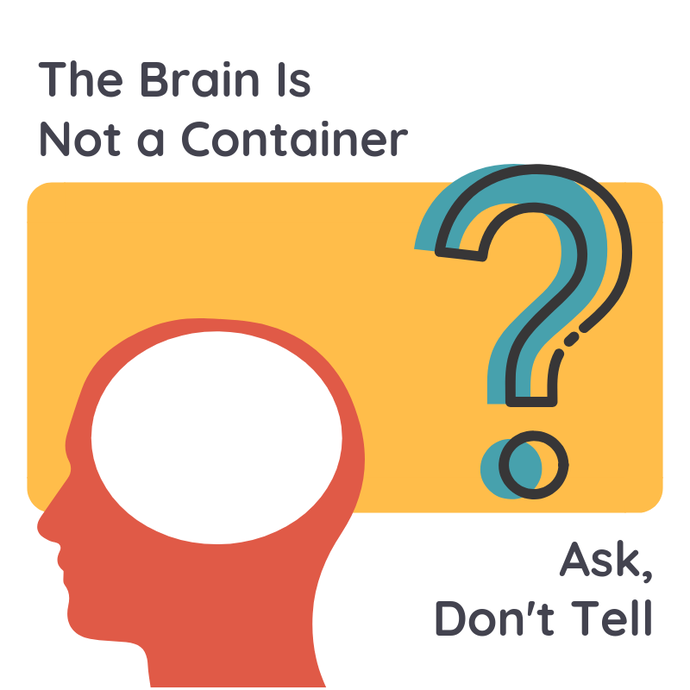 When we ask the brain a question, the brain will search for the answer. Understanding this explains the phenomenon that happens when you run into someone you know at the grocery store but can not remember their name. Later when you are falling asleep your brain remembers their name. That is because you asked your brain a question and although it took several hours to answer, it was diligently finding the answer for you. This philosophy of “Ask, Don’t Tell” is one of the cornerstones of my teaching. It does not matter if the student accomplished the goal, it matters if they know that they accomplished the goal. We may enthusiastically exclaim “Good Job!” when a student has successfully achieved what we were aiming to convey, but we do not know if they were aware of what they accomplished - this is where questions come in. Questions both create awareness and are using the brain as it is intended - to solve problems. Since we only see our students briefly once a week, it is imperative that we set them up in a way that they know how to work when they are practicing by themselves. Questions are a powerful tool to help us create students that are aware of and able to use their time best when practicing at home. Below is a short clip from my parent talk "Creating a Culture of Success" that goes into more detail on the concept of "Ask, Don't Tell." |
Categories
All
Archives
February 2024
AuthorHi! It's me, Heather. I absolutely love working on the Music for Young Violinists project and all the many facets: blogging, website, music, teaching materials, freebies, videos, newsletter and giveaway contests. The best part is connecting with you so feel free to drop me a line. You can learn more about me on the "ABOUT" page. Thanks! |


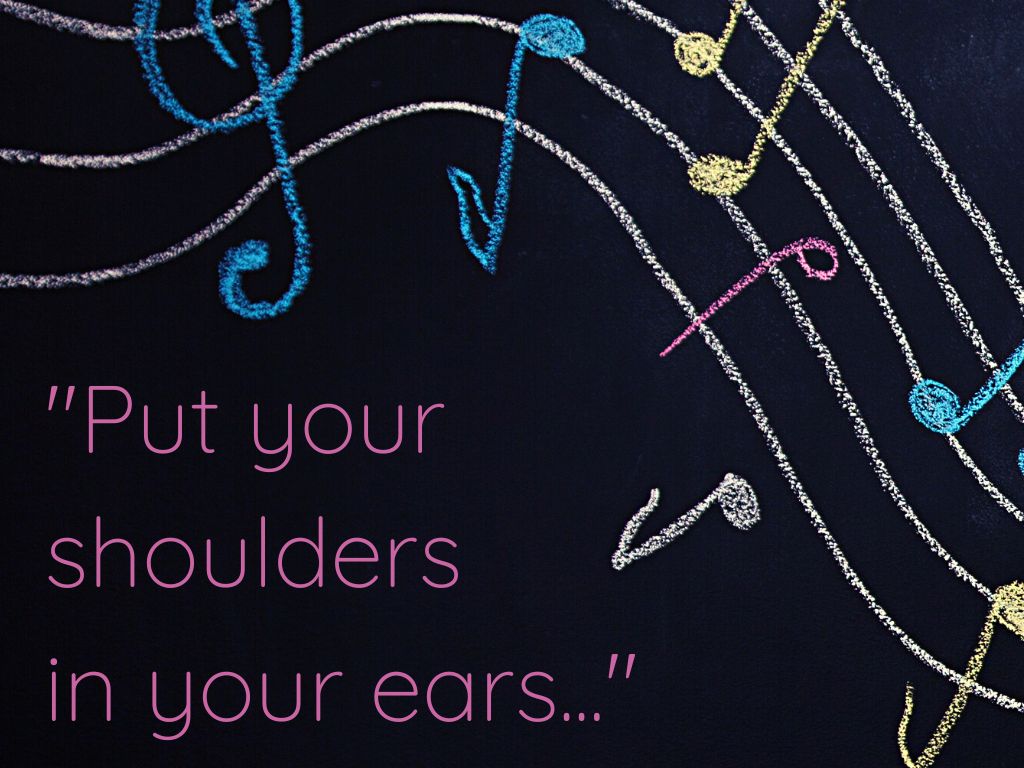




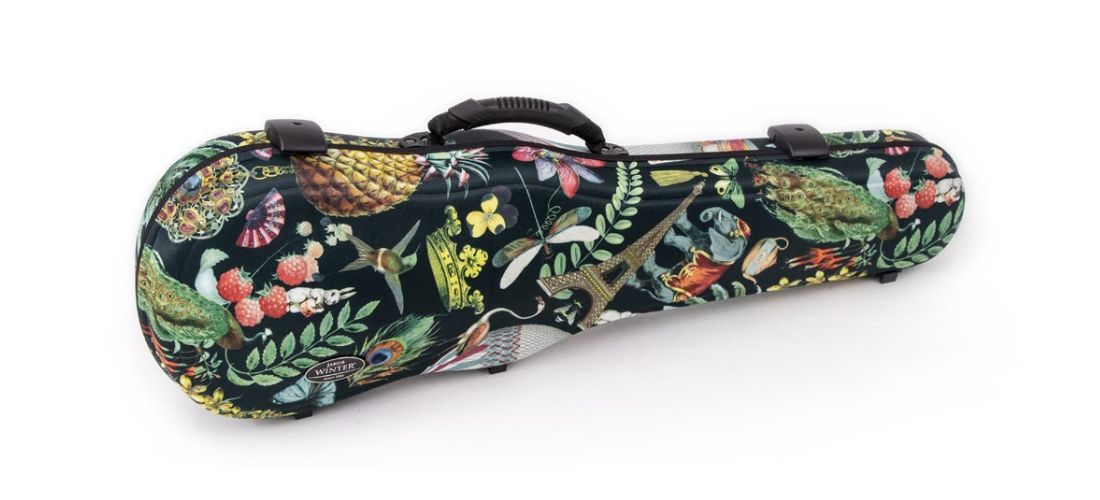




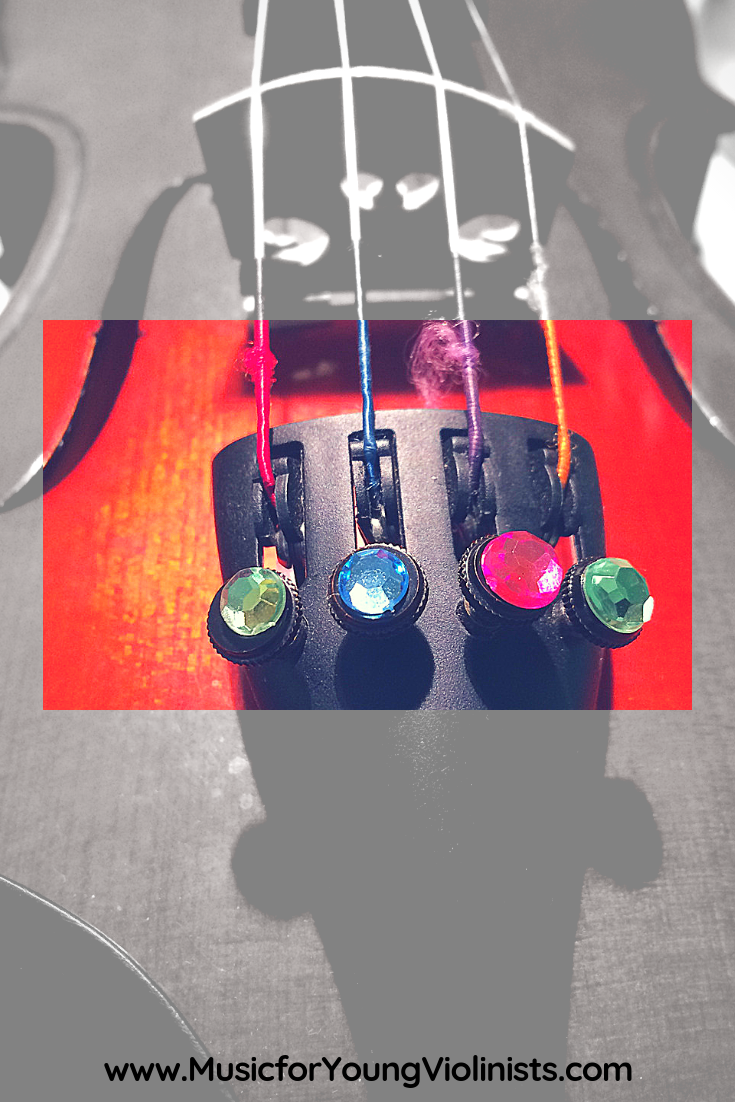












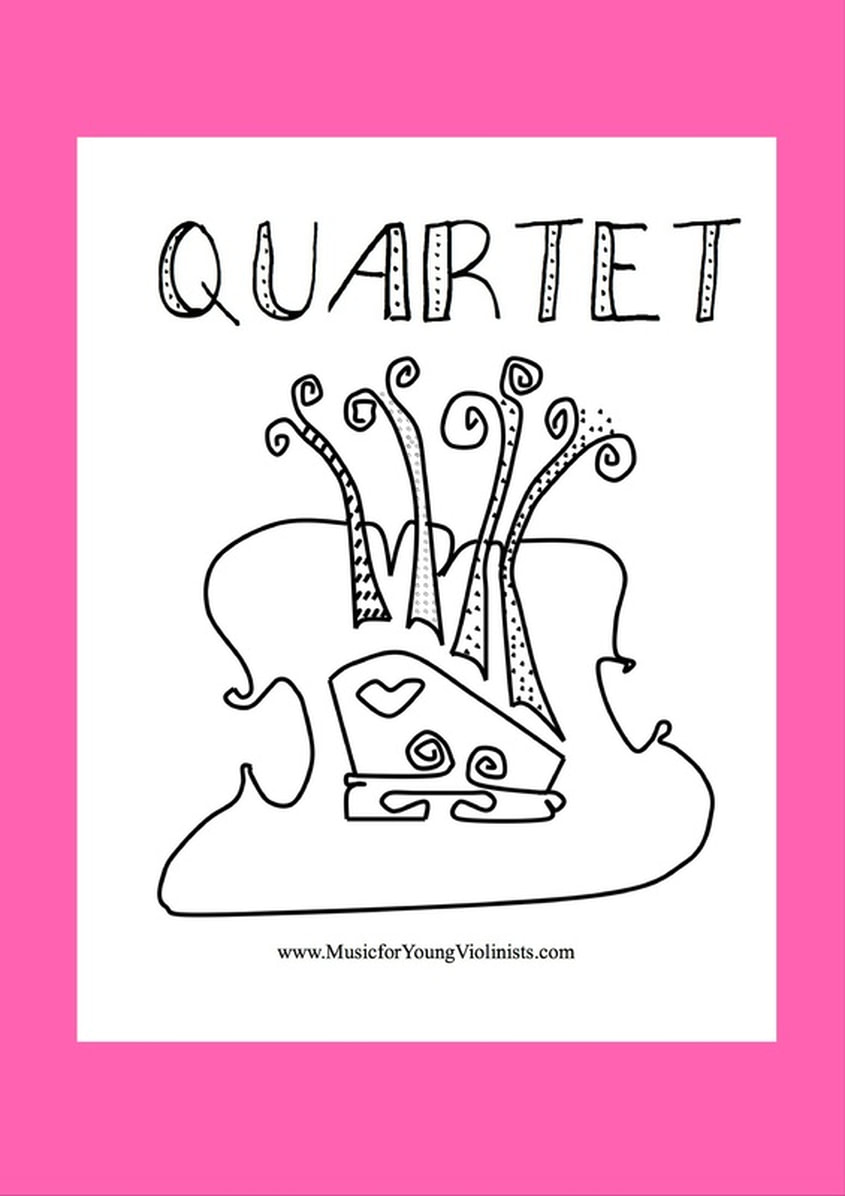
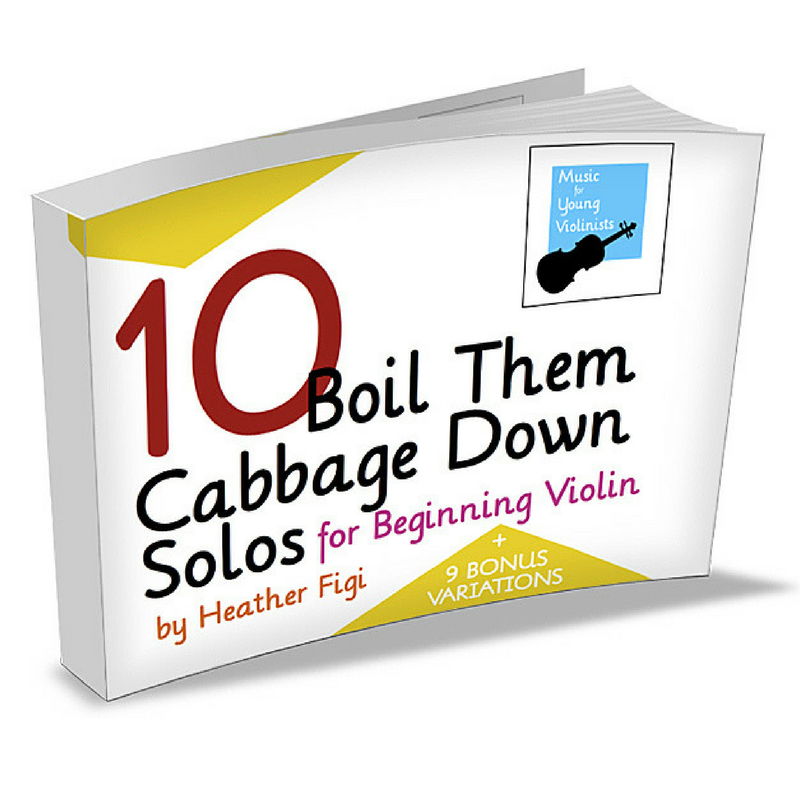









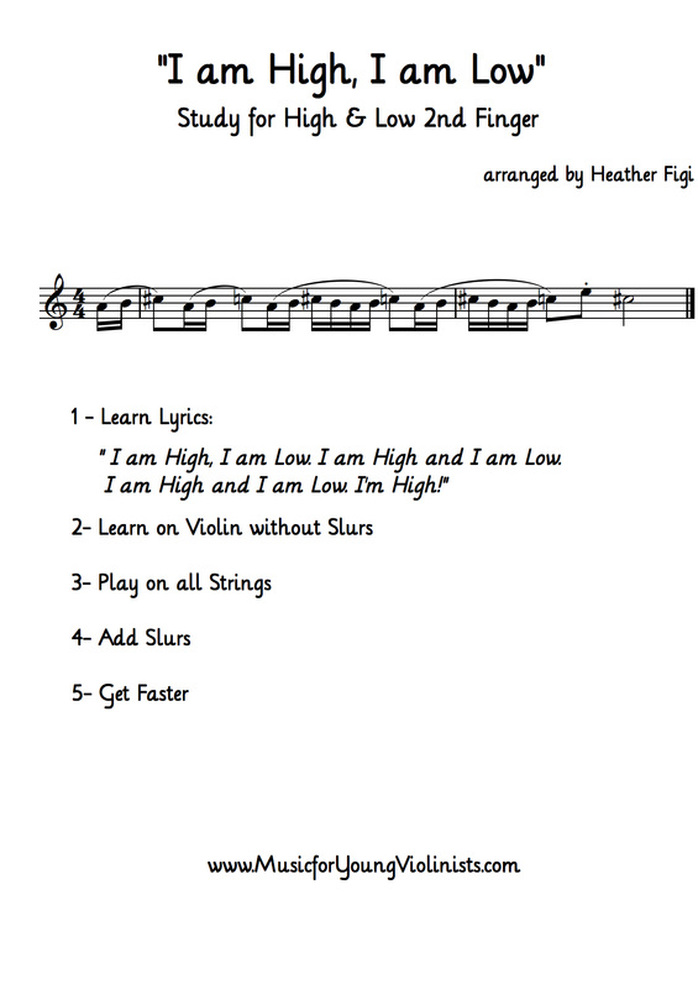


















 RSS Feed
RSS Feed
